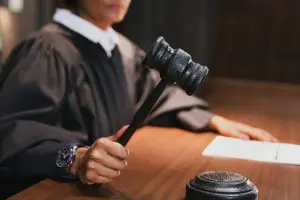Hit and Run Charges and Bail Bonds: Legal Support in Serious Cases
When facing hit and run charges, the legal consequences can be severe and life-altering. Understanding the intricacies of the bail process and securing proper legal representation are crucial steps in navigating this challenging situation. This article delves into the complexities of hit and run cases, the bail bond system, and the importance of expert legal support to protect your rights and future.
A hit and run incident occurs when a driver involved in an accident fails to stop, provide information, or render aid as required by law. The severity of charges can range from misdemeanors to felonies, depending on factors such as property damage, injuries, or fatalities. In most jurisdictions, leaving the scene of an accident is considered a serious offense, carrying potential jail time, hefty fines, license suspension, and a criminal record that can impact various aspects of life.
The aftermath of a hit and run arrest can be overwhelming, with individuals facing immediate detention and the prospect of remaining in custody until their court date. This is where the bail bond system comes into play, offering a pathway to temporary freedom while awaiting trial. However, navigating the bail process for hit and run charges requires a thorough understanding of local laws, court procedures, and the factors that influence bail amounts.
Bail amounts for hit and run cases can vary widely, often starting around $10,000 for cases involving property damage and potentially reaching $100,000 or more for incidents resulting in serious injuries or fatalities. The exact amount is typically determined by a judge who considers various factors, including the severity of the offense, the defendant’s criminal history, ties to the community, and flight risk.
For many individuals and families, posting the full bail amount in cash is financially impossible. This is where bail bond services become invaluable. Bail bondsmen provide a crucial service by posting bail on behalf of the defendant in exchange for a non-refundable fee, usually 10% of the total bail amount. This arrangement allows defendants to secure their release from jail while ensuring their appearance at future court dates.
The process of obtaining a bail bond for hit and run charges typically involves the following steps:
- Initial contact with a bail bond agent
- Providing necessary information about the case and the defendant
- Paying the bond premium (usually 10% of the total bail amount)
- Potentially providing collateral for higher-risk cases
- Signing a contract agreeing to the terms of the bond
- Release from custody once the bond is posted
It’s important to note that while bail bonds provide temporary freedom, they come with significant responsibilities. Defendants must comply with all conditions set by the court, including attending all required hearings and avoiding further legal trouble. Failure to meet these obligations can result in the revocation of bail and additional legal consequences.
Once released on bail, securing competent legal representation becomes the next critical step. A skilled criminal defense attorney specializing in hit and run cases can provide invaluable assistance in building a strong defense strategy. These legal professionals understand the nuances of hit and run laws and can work to challenge evidence, negotiate with prosecutors, and potentially reduce charges or penalties.
Common defense strategies in hit and run cases may include:
- Lack of knowledge: Arguing that the defendant was unaware they were involved in an accident
- Mistaken identity: Challenging the identification of the defendant as the driver involved
- Emergency situations: Demonstrating that leaving the scene was necessary due to a medical emergency or immediate danger
- Insufficient evidence: Highlighting gaps in the prosecution’s case or questioning the reliability of witness testimony
The legal process for hit and run cases can be lengthy and complex, often involving multiple court appearances, negotiations, and potentially a trial. Throughout this process, the bail bond remains in effect, ensuring the defendant’s continued freedom while complying with court requirements.
It’s crucial to understand that the consequences of a hit and run conviction extend far beyond immediate legal penalties. A criminal record can have long-lasting impacts on employment opportunities, housing options, professional licenses, and even personal relationships. This underscores the importance of mounting a robust defense and exploring all available legal options.
In some cases, plea bargaining may be a viable strategy. This involves negotiating with prosecutors to potentially reduce charges or penalties in exchange for a guilty plea. An experienced attorney can assess whether this approach is in the best interest of the defendant, considering factors such as the strength of the evidence, potential sentences, and long-term consequences.
For those facing hit and run charges, understanding the role of bail hearings is crucial. These hearings provide an opportunity to argue for lower bail amounts or alternative release conditions. Factors that may influence a judge’s decision include:
- The defendant’s ties to the community
- Employment status and financial resources
- Prior criminal history
- The severity of the alleged offense
- Public safety considerations
In some jurisdictions, pretrial services programs offer alternatives to traditional cash bail or bail bonds. These programs may include supervised release, electronic monitoring, or other conditions designed to ensure court appearance while allowing defendants to remain in the community.
The impact of hit and run charges on driving privileges is another significant consideration. Many states impose automatic license suspensions for hit and run convictions, with suspension periods varying based on the severity of the offense and prior driving record. Navigating the process of license reinstatement, which often involves completing specific requirements and paying fees, adds another layer of complexity to the legal aftermath of a hit and run incident.
For individuals with commercial driver’s licenses (CDLs), the stakes are even higher. A hit and run conviction can result in the permanent loss of CDL privileges, effectively ending careers in the transportation industry. This highlights the critical importance of aggressive legal defense for professional drivers facing such charges.
The role of insurance companies in hit and run cases adds another dimension to the legal landscape. While insurance typically covers accidents where the policyholder remains at the scene, fleeing can void coverage and leave individuals personally liable for damages. Additionally, insurance rates often skyrocket following a hit and run conviction, creating long-term financial burdens.
In cases where the hit and run resulted in injuries, civil litigation may run parallel to criminal proceedings. Victims may pursue personal injury lawsuits seeking compensation for medical expenses, lost wages, and pain and suffering. The outcome of the criminal case can significantly impact civil proceedings, underscoring the interconnected nature of legal consequences following a hit and run incident.
For those convicted of hit and run offenses, the path to rebuilding one’s life and reputation can be challenging. Many jurisdictions offer expungement or record sealing options after a certain period, allowing individuals to potentially clear their criminal record. However, eligibility criteria are often strict, and the process can be complex, typically requiring legal assistance.
The psychological impact of being involved in a hit and run accident, whether as the driver or victim, should not be underestimated. Many individuals experience significant stress, anxiety, and guilt following such incidents. Seeking mental health support and counseling can be an important part of the recovery process, both for those facing charges and for victims of hit and run accidents.
Prevention and education play crucial roles in reducing the incidence of hit and run accidents. Many jurisdictions have implemented public awareness campaigns highlighting the legal and moral obligations of drivers involved in accidents. These efforts often emphasize the severe consequences of fleeing the scene and the importance of remaining calm and following proper procedures after an accident.
For those who find themselves witnesses to hit and run incidents, understanding the proper steps to take can be crucial in assisting law enforcement and potentially preventing future occurrences. Key actions include:
- Safely observing and recording details about the fleeing vehicle
- Checking on the welfare of any victims and calling emergency services if needed
- Providing a detailed statement to law enforcement
- Being willing to testify if the case goes to trial
The advent of technology has introduced new dimensions to hit and run investigations and prevention. Surveillance cameras, dashcams, and smartphone recordings increasingly play roles in identifying and prosecuting hit and run drivers. Additionally, some vehicle manufacturers are developing technologies that can automatically report accidents and vehicle locations, potentially reducing the likelihood of successful hit and runs.
Legal reforms surrounding hit and run laws continue to evolve in many jurisdictions. Some states have increased penalties for hit and run offenses, particularly those resulting in serious injuries or fatalities. Others have implemented mandatory minimum sentences or enhanced penalties for repeat offenders. Staying informed about local laws and potential changes is crucial for both drivers and legal professionals.
The intersection of hit and run cases with other legal issues, such as DUI (Driving Under the Influence) charges, can significantly complicate legal proceedings. When alcohol or drugs are involved in a hit and run incident, defendants may face multiple serious charges, each carrying its own set of penalties and long-term consequences. In such cases, the expertise of attorneys specializing in both traffic offenses and DUI defense becomes invaluable.
For non-citizens, the consequences of a hit and run conviction can be particularly severe. Immigration law often treats hit and run offenses, especially those involving injuries, as crimes of moral turpitude. This classification can lead to deportation proceedings, denial of citizenship applications, or other immigration consequences. Non-citizen defendants must work closely with attorneys who understand both criminal defense and immigration law to navigate these complex intersections.
The role of victim advocacy in hit and run cases has gained increased attention in recent years. Many jurisdictions now offer support services for victims of hit and run accidents, including assistance with medical bills, lost wages, and navigating the legal system. These advocates can play a crucial role in ensuring victims’ voices are heard throughout the legal process and in pushing for appropriate penalties for offenders.
As society becomes increasingly aware of the dangers and consequences of hit and run incidents, there’s growing interest in technological solutions to prevent or mitigate these occurrences. Innovations such as automatic accident detection and reporting systems in vehicles, enhanced traffic camera networks, and even drone surveillance are being explored as potential tools to reduce hit and run incidents and improve the chances of apprehending offenders.
The financial implications of hit and run charges extend beyond immediate legal fees and bail bonds. Convicted individuals often face significantly higher insurance premiums, potential civil judgments, and the costs associated with license reinstatement and mandatory driver education programs. Understanding these long-term financial consequences is crucial for defendants and their families when making decisions about legal representation and defense strategies.
For juveniles involved in hit and run incidents, the legal process can differ significantly from adult cases. Juvenile courts typically focus more on rehabilitation than punishment, but the consequences of a hit and run conviction can still have lasting impacts on a young person’s future. Specialized legal representation familiar with juvenile law is essential in these cases to protect the rights and future prospects of young defendants.
The ethical considerations surrounding hit and run incidents are complex and often debated. Legal and moral obligations can sometimes conflict, particularly in situations where drivers fear for their safety or face other extenuating circumstances. Public discourse and legal scholarship continue to explore these ethical dilemmas, influencing both public opinion and potential future legal reforms.
As vehicle automation technology advances, new legal questions arise regarding liability in hit and run incidents involving self-driving cars. Determining responsibility when an autonomous vehicle is involved in an accident and fails to stop presents novel challenges for lawmakers and courts. This emerging area of law will likely see significant developments in the coming years as autonomous vehicle technology becomes more prevalent.
The impact of social media on hit and run cases cannot be overlooked. In many instances, law enforcement agencies use social platforms to disseminate information about wanted vehicles or suspects, leading to crowd-sourced investigations. However, this public exposure can also complicate legal proceedings, potentially influencing jury pools and public opinion before cases go to trial.
For those convicted of hit and run offenses, rehabilitation programs can play a crucial role in preventing future incidents and facilitating reintegration into society. Many jurisdictions offer or mandate participation in driver education courses, anger management programs, or substance abuse treatment as part of sentencing. These programs aim to address underlying issues that may have contributed to the hit and run incident and reduce recidivism rates.
The psychological trauma experienced by hit and run victims often extends far beyond physical injuries. Many victims report long-lasting anxiety, fear of driving, and post-traumatic stress disorder (PTSD) symptoms. Recognizing and addressing these psychological impacts is an important aspect of the overall response to hit and run incidents, both in terms of victim support and in considering appropriate penalties for offenders.
As society continues to grapple with the serious issue of hit and run incidents, ongoing research and policy discussions focus on finding more effective ways to prevent these crimes and support victims. This includes exploring alternative models of justice, such as restorative justice programs, which aim to repair the harm caused by the offense through mediation and reconciliation between offenders and victims.
The role of community support in both preventing hit and run incidents and supporting those affected cannot be overstated. Community-based initiatives, such as neighborhood watch programs, driver education workshops, and support groups for victims, play vital roles in raising awareness and fostering a culture of responsibility on the roads.
In conclusion, navigating the legal landscape of hit and run charges requires a comprehensive understanding of criminal law, bail procedures, and the long-term implications of these serious offenses. From securing bail bonds to mounting an effective legal defense, the choices made in the aftermath of a hit and run incident can have profound impacts on an individual’s future. As laws continue to evolve and technology plays an increasing role in both prevention and prosecution, staying informed and seeking expert legal guidance remains crucial for anyone involved in or affected by hit and run cases.
Website citations used for this article:
- https://www.justia.com/criminal/offenses/traffic-offenses/hit-and-run/
- https://www.avvo.com/legal-answers/i-am-out-on-bail-and-i-was-in-a-car-accident-in-a–5863236.html
- https://www.futurebailbonds.com/resources/bail-for-hit-and-run
- https://www.faustoatilano.com/blog/29-bail-bonds-for-hit-and-run-charges
- https://www.newjerseycriminallawattorney.com/traffic-offenses/leaving-the-scene-of-an-accident/
- https://www.tncourts.gov/sites/default/files/docs/bail_hearing-bond_revocation_-_presentation.pdf
- https://www.tncourts.gov/sites/default/files/docs/Bond%20IssuesBond%20Hearings%20-%20Handout%20I.pdf
- https://herbertlux.com/blog/understanding-tennessee-bail-bond-laws/
- https://www.prisonpolicy.org/reports/bail.html
- https://cnytriallaw.com/navigating-the-complexities-of-bail-and-bond-processes-in-felony-cases/
- https://chicagocriminaldefenselawyer.com/practice-areas/traffic-violations/hit-and-run/
- https://shelawfirm.com/bail-bondsman-what-you-need-to-know/












